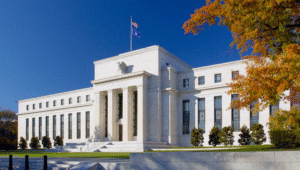$BTC $ETH $XRP
#Bitcoin #Crypto #Cryptocurrency #Blockchain #Election2024 #FinancialRegulation #DigitalAssets #Innovation #MarketTrends #Investing #Trump2024 #CryptoLegislation
Bitcoin’s rally to nearly US$90,000 on November 12 marks a significant milestone in the cryptocurrency’s journey, reflecting both its increasing market strength and the influence of broader economic and political developments. This surge, reaching a peak of US$89,645, is notably tied to the outcome of the US presidential election, where Donald Trump and the Republican Party’s victory across all seven swing states and their successful regain of a Senate majority played a crucial role. The timing of Bitcoin’s price movement is particularly interesting, coming in the wake of the election results and outpacing its previous record high. Amidst the political backdrop, the cryptocurrency demonstrated remarkable growth, surging by nearly 7 percent within 24 hours of the election’s call for Trump, further emphasizing the market’s sensitivity to political climates.
The price trajectory of Bitcoin around the election period offers an insightful case study into how political events can catalyze movements within the cryptocurrency markets. After breaking past US$75,000, Bitcoin’s performance remained steady, contrasting with the volatility observed in the preceding months. This newfound stability around and after the election underscores the market’s optimism towards a Republican administration, which is generally perceived to favor looser financial regulations. Additionally, the announcement of crypto-friendly policymakers gaining influence hints at a conducive environment for cryptocurrency legislation, potentially unlocking further growth and innovation within the sector. The Financial Innovation and Technology for the 21st Century Act (FIT21) and the Bitcoin Act of 2024 stand as prime examples of legislation that could significantly shape the regulatory landscape for digital assets in the United States.
Moreover, the legislative prospects under the Republican leadership, such as the FIT21 and the Bitcoin Act of 2024, suggest an impending strategic direction towards integrating Bitcoin and other cryptocurrencies within the federal economic framework. FIT21’s focus on delineating digital assets and assigning appropriate regulatory oversight, and the Bitcoin Act’s aim to establish a strategic Bitcoin reserve by the federal government, are indicative of the growing acknowledgment of cryptocurrencies’ potential in mainstream financial systems. Such legislative developments, coupled with the supportive stance of figures like Trump and Senator Cynthia Lummis, foreshadow a broader acceptance and integration of digital currencies, potentially driving further adoption and innovation in the cryptocurrency sphere.
Bitcoin’s recent upswing amid these political and legislative developments not only exemplifies the interplay between politics and cryptocurrency markets but also highlights a broader trend of increasing investor optimism towards favorable regulatory environments fostering cryptocurrency adoption and innovation. As the future of cryptocurrency regulation in the US appears to lean towards a more accommodating approach under the Republican administration, the implications for market dynamics, investor behavior, and the broader financial ecosystem are profound. This period could mark the beginning of a significant phase in the cryptocurrency industry, characterized by enhanced regulatory clarity, increased institutional acceptance, and the further maturation of digital assets as a key component of the global financial landscape. Observers and stakeholders within the crypto space will undoubtedly be watching closely as these developments unfold, shaping the trajectory of Bitcoin and the wider cryptocurrency market in the years to come.







Comments are closed.